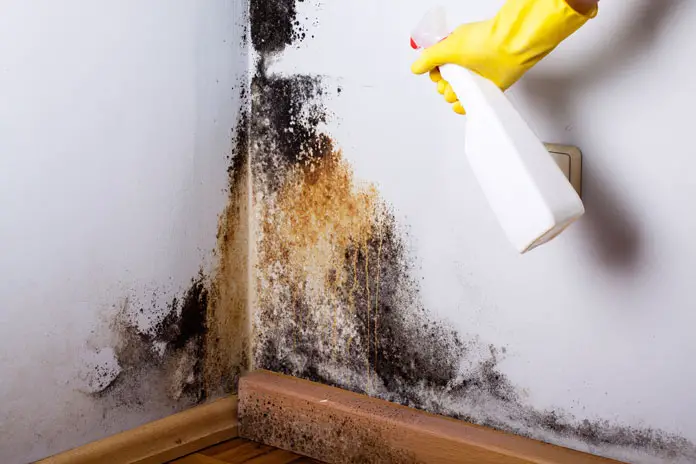Looking to get rid of black mold in the easiest and most effective way? Black mold has the ability to cause extensive damage to your basement and health if it is left untreated. Medically speaking, this can cause a variety of conditions that could be as simple as an allergic reaction to something more serious such as respiratory and neurological problems. In terms of your basement’s integrity, black mold has the ability to destroy your walls, floors, ceilings, and other vital parts of your house. If you have a basement bar then mold will definitely turn your friends away.
The easiest way to identify if you have this problem in your basement is its visibility. Black mold is, well… black. But there are also cases when you can possibly see touches of greenish yellow spores on it. If you intend to touch it, do so with a glove; it will feel slimy. Mold has a very musty and stuffy smell. Mildew is present much like when you forget to wash or dry wet clothes that was left inside your bag after a trip… only worse. The faintest smell can be a good indication that you have mold growth going on in your basement. Other small signs include: peeling paint, chalky substance, decaying wood, and recurring health symptoms among family members.
Getting rid of black mold can be quite expensive. But if the growth is just on the surface or has barely caused serious damage, then you can save a lot of money by doing it on your own. The following should provide you with a helpful guide on how to get rid of black mold:
5 Ways to Get Rid of Black Mold
- Stay Safe and Bring in the Experts – yes, this is not exactly what you were hoping to read first. But it is absolutely vital for you to first identify the extent of the growth. For all you know, it’s not just present on the one spot you identified, it could go all the way around your basement. These experts know best; they will be able to tell you how bad it is – or how early you’ve detected the problem. If they say that the growth has only affected the surface, then that’s good news; you can get that removed by yourself. However, if they say that it has gone too deep, then sadly, you’ll need to let the experts handle it for you.
- Gear Up and Prepare the Area – there are a couple of things that you will need that includes the following: work gloves (rubber or latex), airtight goggles, dust mask (best if you have an N-95 respirator), disposable clothes, a spray bottle, duct tape, and plastic wrap/sheet. Before doing anything, make sure that you are already wearing your protective gear. The next thing to do is to seal of the ducts, door cracks, and any other areas of ventilation with the plastic and duct tape. One effective tip is to have a small fan act like an exhaust fan by directing it outside the window.
- Get Cracking and Start Scrubbing – with your spray bottle, gently mist the affected area with plain water. Do not forget to do this because this will prevent the mold spores from spreading. As long as it’s wet, the mold spores will stick together and will be much easier to remove. Use a stiff brush with dish soap and warm water to scrub the affected area until you can vouch that it is all clear.
- Disinfect and Kill those Spores – there is a variety of effective disinfectants that you can use. But for the purpose of identifying the cheapest yet most powerful, let us just focus on vinegar. Get your spray bottle and make a 5% vinegar solution. Use this to generously spray the area you just cleaned. If you find vinegar to be too strong, you can add a few drops of essential oil such as tea tree oil or lavender to the solution to neutralize the smell. If you feel the need to be absolutely thorough, you can skip the water and soapy water solution for steps two and three and use the vinegar solution instead. Call it ultimate redundancy if you will. Hey, better safe than sorry, right?
- Cool and Dry; Black Mold say Goodbye – leave the solution you just applied to dry. Do not wipe it. Let it air dry. And that should seal the deal. Speaking of sealing, you should keep the clothes you wore and the tools you used in a bag. Seal and dispose properly.
Final Thoughts
Ultimately, getting rid of basement mold will depend on how much of it you have. We’ve outlined a few options, some are simple while others will cost a good amount of money. Take preventative measures to keep the mold away in the first. Once you’ve gotten rid of the mold you’ll be able to spot other areas that are affected and you’ll know how to deal with them properly.

